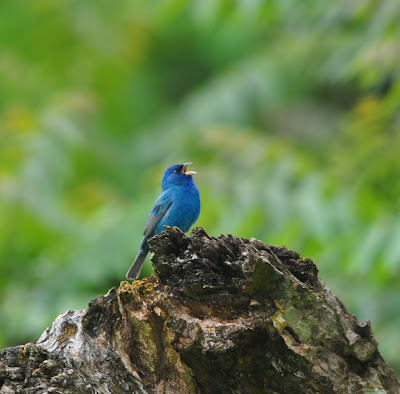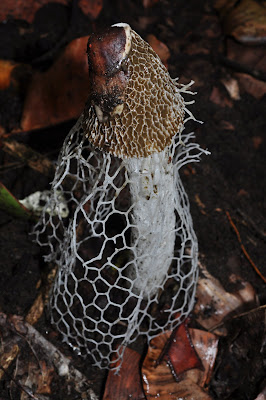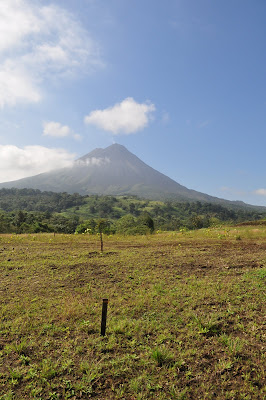1. Pink-footed Shearwater spotted through the fog offshore of Crescent City, CA.
2. Boat-billed Heron - A small group found at the lagoon in Carara National Park in Costa Rica. This bird had started to become a nemesis bird for me, not particularly difficult to see but one I just kept missing. Plus it is just so weird looking.
3. Green Ibis - found while kayaking in Tortuguero National Park in Costa Rica. Ibises are just so cool, especially when they are green.
4. Great Green Macaw - Only 200 - 1000 pairs are estimated to remain in the wild and I will never forget seeing a pair dive and bank into the sunlight screaming over the meandering canals of Tortuguero National Park.
5. Spotted Owl - Although never actually seen, this highly endangered species often sang me to sleep in my tent in the mountains of Northern California
6. Black Swift - These specialists can usually only be found near waterfalls where they will build their nests behind the falling water for protection from predators. Masters of flight, watching these larde swifts forage for insects over a misty waterfall pool is one of my birding highlights of the year. Seen at Burney Falls near Burney CA, and at Catarata Las Fortunas in Costa Rica.
7. Coppery-headed Emerald - While there are certainly species of hummingbird more beautiful and with more showy names such as the Violet-Sabrewing or the Fiery-throated Hummingbird, this species is unique in that it is endemic to only the cloud forests of Costa Rica. Seeing them at the Monte Verde Cloud Forest Reserve was a special treat.
8. Royal Flycatcher - What can I say about this bird. Just look at it. It's amazing. We caught this bird and banded it at Cano Palma Research Station located in the Barro Colorado Reserve in Northeastern Costa Rica. Only the 3rd record of this species in 20 years.
9. Red-capped Manakin - Quite possibly the coolest bird in the world. It's stunning red cap and bright neon yellow thighs are amazing enough but when you look at the moonwalk dance that this bird does to attract females you have to agree that this bird is amazing.
10. Northern Shrike - Searching for this bird with my good friends Dan Haas and Warren Strobel in Queens Anne County, MD was a very enjoyable birding experience. Seeing it just as we were about to call it a day and after searching in vain for the large dinosaur like Sandhill Crane made it even more enjoyable
11. Song Wren - This bird may have the beautiful song that I have ever heard - frequently heard singing in Cano Palma, Costa Rica but only captured once.
12. Varied Thrush - of the 19 species of Thrush I have seen in the past year this bird is my favorite. It's plumage is stunning and it's eerie, creepy space alien song that sifts through the Redwoods from all directions is a defining sound of Pacific Northwest forests.
13. Hermit Warbler - Of all the wood warblers I think that this is the most beautiful. This was a commonly captured bird in N. California and it was always a treat to find one in the nets.
14. Mourning Warbler - For some strange reason this bird showed up 5 feet from my door on April 24th of this year. The earliest record in VA by 6 days and the earliest in the piedmont by 2 weeks. I credit this bird with getting me out of my non photo taking funk that I had fallen into.
15. Red-legged Honeycreeper - One of those birds that you just have to google and see the picture to see why it is on this list. At Manuel Antonio National Park, CR.
16. Evening Grosbeak - This bird, apart from being very beautiful is becoming increasingly rare. One banding station in Lassen National Forest is California always had them and their distinctive flight calls always alerted to me their presence often atop a strand of conifers nearby.
17. Bicolored Antbird - Since these birds occur in only tropical and subtropical regions, it was interesting to see many different representations of the family in Costa Rica. Named antbirds because they follow army ant swarms and eat the insects that are trying to escape the ant swarm.
Early ornithologists didn't know what to call them so they just named them after things they looked like hence, antwren, antshrike and antvireo. Not all these birds follow swarms, but the bicolored antbird is an obligate follower of ant swarms. Often birds will follow the same swarm their whole lives. Finding an army ant swarm is a highlight for anyone birding in the neotropics.
18. Red-Necked Phalarope - This bird was a highlight for me because of the exceptional photo shoot I was able to get of a very tolerant bird found in the Arcata Marsh in CA.
19. American Pygmy Kingfisher - A kingfisher the size of a warbler. What could be cooler than that? Seen on numerous occasions on the east coast of Costa Rica.
20. Marbled Murrelet - The life history of this bird is insane. A seabird that flies inland as far as 50 miles to nest in old growth Redwood, of Douglas Fir forests in the Pacific Northwest. After a one month incubation period it is then fed by the parents for 40 days before fledging. The parents must constantly return to the sea for food and their flight calls can be heard early in the morning as they are returning from the sea to the nest. I was lucky to participated on several surveys offshore Northern California this past summer.
Some recent pics:

Indigo Bunting at Secluded Farm outside Charlottesville, VA

Bobolink at Old Trail - Crozet, VA


Prairie Warbler in Crozet, VA


Mourning Warbler outside my front door in Charlottesville, VA. New early date for VA





































